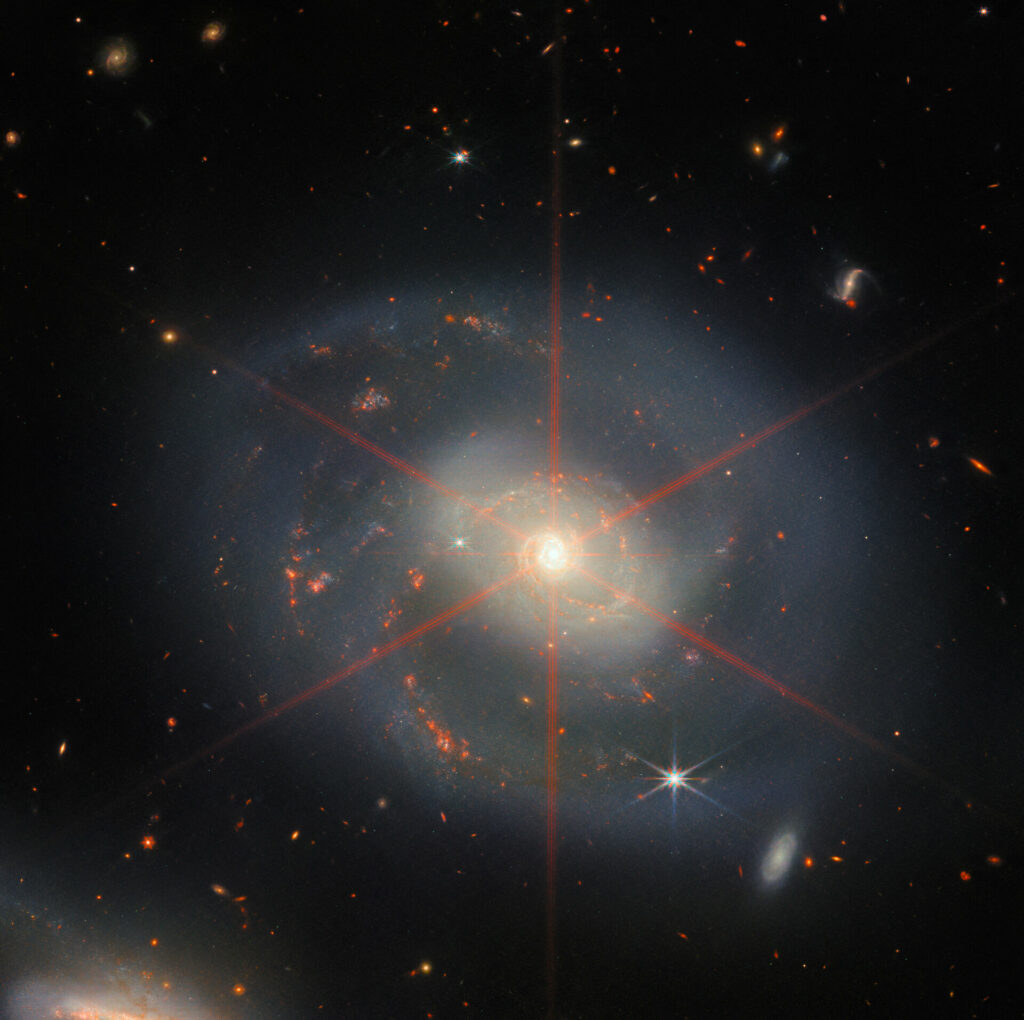Astronomers have published a new image taken by the James Webb Space Telescope (JWST). The spiral galaxy NGC 7469 dominates on the picture.

NGC 7469 is located 220 million light years from the Milky Way in the direction to the constellation Pegasus. Its diameter is 90 thousand light years. Due to the fact that NGC 7469 is turned “full face” to the Earth, we have the opportunity to examine its spiral structure in full detail.
The most notable part of NGC 7469 is its nucleus. It actively emits in the infrared range, and its spectrum shows many bright broad bands, indicating powerful gas emissions. This is due to the activity of the supermassive black hole located at the center of NGC 7469. It is actively absorbing gas and dust, which is accompanied by the release of a large amount of energy.
The nucleus of NGC 7469 is surrounded by a ring consisting of regions of active star formation. Its diameter is 1500 light years. Due to its ability to detect infrared radiation, JWST was able to detect a number of previously unknown stellar “maternities” in NGC 7469, as well as regions consisting of hot turbulent gas. The analysis of the data collected by the space telescope allowed us to detect traces of the destruction of small dust grains within a radius of several light years from the nucleus of NGC 7469. This proves that the black hole directly affects intragalactic processes. In addition, JWST recorded the stream of ionized atoms leaving the core. These atoms move at a speed of approximately 1780 km/s.
You can also pay attention to the fact that from the center of NGC 7469 characteristic red rays emit, forming a hexagonal star. This is not a real object, but an image artifact known as “diffraction rays.” They arose because of the design features of the JWST. Usually, in images from space telescopes, diffraction rays surround foreground stars located in our Milky Way. However, the core of NGC 7469 is so bright that it also acquired its own diffraction rays.
You can also view a Hubble image of NGC 7469. It shows both the galaxy itself and its nearest neighbor.

